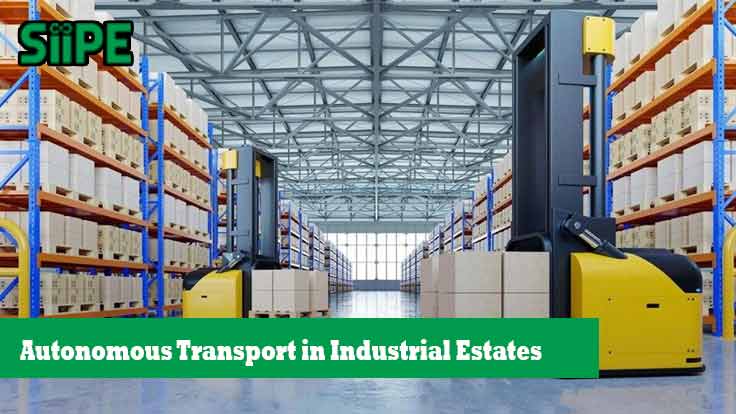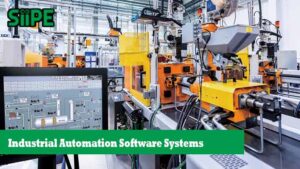As industrial estates evolve, the demand for greater efficiency and automation is at an all-time high. One of the most transformative innovations in this space is autonomous transport — a system where vehicles navigate and operate without human intervention.
Autonomous transport in industrial estates delivers multiple benefits, such as lowering operational costs, enhancing safety, and improving logistics precision. Thanks to emerging technologies like artificial intelligence (AI), the Internet of Things (IoT), and 5G connectivity, this is no longer a distant vision — it’s becoming a practical reality today.
What Is Autonomous Transport?
Autonomous transport refers to vehicles that can drive themselves using a combination of sensors, cameras, GPS, AI, and machine learning algorithms. These vehicles are capable of making decisions in real time without human input.
Several types of autonomous vehicles are now being used in industrial contexts, including:
-
Self-driving trucks for inter-facility cargo movement
-
Autonomous forklifts for warehouse handling
-
Driverless shuttle buses to transport personnel
-
Automated guided vehicles (AGVs) for precise on-site logistics
These systems are designed to work seamlessly in controlled environments like industrial estates.
Why It Matters in Industrial Estates
In large industrial zones, the movement of goods and personnel plays a central role in operational efficiency. Transportation systems must be both reliable and cost-effective to meet modern industrial needs.
Integrating autonomous transport in these estates brings several advantages. Not only can it streamline logistics and reduce errors, but it also enables 24/7 operations with minimal downtime. Additionally, autonomous vehicles optimize fuel use and provide long-term cost savings, making them highly attractive for both estate developers and tenants.
Key Benefits of Autonomous Transport
1. Cost Efficiency
One of the most compelling benefits of autonomous vehicles is reduced operational expenditure. Since there’s no need for human drivers, companies save on labor costs, training, and insurance.
Moreover, these vehicles:
-
Follow the most efficient routes automatically
-
Require less maintenance due to predictive diagnostics
-
Operate continuously without breaks
Over time, these savings significantly offset the initial investment costs.
2. Improved Safety
Safety is a top priority in industrial zones. Autonomous vehicles are equipped with multiple sensors and AI that allow them to detect obstacles, respond faster than humans, and avoid risky behaviors.
For example, they can:
-
Prevent accidents in loading docks or narrow passages
-
Navigate safely in hazardous environments like chemical zones
-
Operate smoothly under poor lighting or weather conditions
Consequently, fewer accidents lead to lower liability and insurance premiums.
3. Increased Productivity
Autonomous systems can run 24/7 without fatigue or the need for shift rotations. This improves throughput and minimizes delays in production and delivery schedules.
In addition:
-
Goods can move between warehouses more quickly
-
Material handling becomes more consistent
-
Downtime due to human error is significantly reduced
As a result, companies enjoy smoother workflows and higher productivity.
4. Real-Time Data Insights
Another critical benefit is the ability to collect and analyze real-time data. These vehicles can:
-
Track inventory movement automatically
-
Predict traffic congestion or supply chain delays
-
Generate detailed reports on logistics performance
-
Suggest route optimizations based on data
With this data, managers can make faster and more informed decisions.
Real-World Applications
A. Internal Logistics
Self-driving trucks and AGVs can efficiently transport raw materials, components, or finished goods between buildings or production lines within the estate.
B. Last-Mile Delivery Within the Estate
Some estates use autonomous delivery bots to transport small packages from logistics centers to tenant facilities with precision and minimal human input.
C. Employee Transport
Driverless electric shuttles are being deployed to move workers from parking areas or gates to their workstations. This boosts convenience and reduces transport time during shift changes.
D. Integration With Ports or Rail Hubs
Industrial estates near ports or rail terminals benefit from autonomous container trucks that move goods directly from ships or trains to storage areas — reducing loading times and congestion.
Technologies Behind Autonomous Transport
Several technologies work together to make autonomous transport possible:
-
LIDAR and RADAR sensors: Provide object detection and spatial awareness
-
AI and machine learning: Help vehicles learn and adapt to road conditions
-
GPS and HD mapping: Enable precise navigation and localization
-
Vehicle-to-Everything (V2X): Facilitates communication between vehicles and infrastructure
-
Cloud-based fleet management: Allows remote tracking, diagnostics, and control
Combined, these technologies create a reliable and intelligent transport ecosystem.
Global Examples
-
Tianjin Port, China: Uses autonomous trucks and cranes to move shipping containers with high efficiency
-
Singapore’s Jurong Innovation District: Pilots autonomous shuttle buses and delivery bots across the estate
-
Tesla Gigafactory, USA: Implements semi-autonomous robots and forklifts for internal transport
These examples show that the transition is already underway in forward-thinking industrial environments.
Challenges to Consider
While the technology is promising, several challenges must be addressed:
1. High Initial Costs
The setup requires investment in infrastructure, such as dedicated lanes, sensors, and communication systems. However, this can be justified by long-term savings.
2. Regulatory Uncertainty
Laws and regulations around autonomous vehicles, especially in private industrial zones, are still developing and may vary by region.
3. Technical Limitations
Autonomous systems may struggle in poor weather or with unexpected obstacles. Regular updates and system redundancy are needed to ensure reliability.
4. Cybersecurity Risks
Since these vehicles rely on connectivity, they could be vulnerable to hacking or data breaches if not properly secured.
How Industrial Parks Can Prepare
To successfully adopt autonomous transport, industrial park operators should:
-
Invest in digital infrastructure, including 5G and IoT sensors
-
Standardize roads and signage to suit automated navigation
-
Establish safety protocols and pilot areas for testing
-
Collaborate with technology partners to integrate systems
-
Educate tenants and staff about the new transport processes
Planning and collaboration are essential for a smooth transition.
Environmental Impact
Autonomous vehicles, particularly electric-powered ones, support sustainability goals. Their benefits include:
-
Lower carbon emissions
-
Reduced fuel usage due to optimized routing
-
Quieter operations
-
Alignment with ESG (Environmental, Social, and Governance) principles
This makes autonomous transport a smart option for eco-conscious industrial developers.
Autonomous transport in industrial estates is no longer just an emerging trend — it’s a game-changing solution for modern logistics. It brings efficiency, safety, and cost savings, while enabling smarter decision-making through real-time data.
Industrial estates that invest early in this technology will gain a strategic edge and attract innovative tenants looking for modern, future-ready infrastructure.











